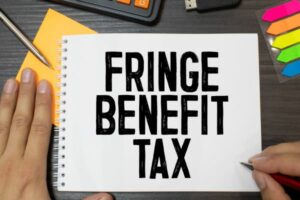With the end of the financial year just around the corner what do SMSF trustees need to ensure they sign off on before EOFY?
Getting the right amount of money in
- Making sure members put in the maximum contributions each year is important. This is the time to review those pay slips and statements to check how much has been contributed in the financial year by employers as part of their superannuation guarantee obligations (9.5 per cent of salary) and any salary-sacrifice contributions.
- The maximum that can be contributed as concessional (or pre-tax) contributions is $25,000 this financial year – these are the superannuation guarantee and salary-sacrifice contributions. If there is a shortfall, members can make up the difference and claim a tax deduction in their personal tax return later.
- After-tax contributions can also be made by members (called non-concessional contributions) and these are limited to $100,000 a year. Up to three years’ worth of these contributions can be made in a single contribution (that is, up to $300,000) with special rules applying. In particular, these contributions are restricted if the members’ account balances already exceed certain levels.
- If a member has sold assets, or a business or inherited under an estate, they may wish to consider putting some of this into superannuation in this way. Getting good advice as to how to do this and how the rules work is always worth it.
- All these contributions must be received by the fund on or before June 30 to count for this financial year. This generally means that a cash contribution must be credited to the bank account of the fund by this deadline. If making a contribution by way of transfer of an asset (like shares or units in a managed fund), a properly executed transfer document must be completed and received by trustees before this date.
- Asset contributions are a little trickier and getting advice on what to do is a good idea.
- One off events such as retirement or sale of large assets where income in the following year is not likely to be as high may provide an opportunity to make 2 years worth of concessional contributions via a reserving strategy. Contributions reserves can also be used to increase non-concessional contributions in some cases. This is a complex strategy that requires the right advice and documentation and you should consult your adviser.
Please note: June 30 falls on a Sunday this year and contributions must hit the Super Fund by Friday 28th June, 2019.
Getting the right amount of money out
- Those members with a pension being paid from their fund or who started one during the year must ensure they have drawn out at least the minimum legally required pension payment for the financial year. These pension payments must be paid by the fund and received by the pension member before year-end to qualify as a pension payment for this financial year.
- An important consideration with pension payments is that they can only be made using cash. Unlike contributions that can be a transfer of an asset to super, payments will only count towards these minimum pension percentages if made in cash.
- SMSF trustees need to ensure that sufficient cash is always available to make these cash pension payments and that they don’t have to sell assets.
- Failure to make the minimum pension payment in a financial year will mean that the pension will not exist for that year. This means that the tax benefits of paying a pension will be lost by the SMSF for that year.
TBAR Obligations
Are you aware of your Transfer Balance Account Reporting (TBAR) obligations? SMSFs that have any members with a total superannuation balance of $1 million or more on 30 June the year before the first member starts their first retirement phase income stream, must report events affecting members’ transfer balances within 28 days after the end of the quarter in which the event occurs. What events do you need to report?
- details of new retirement phase and death benefit income streams including value and type (when a death benefit income stream is reversionary, the start date will be the date on which the member died),
- details of limited recourse borrowing arrangement (LRBA) payments (including the value and date of each relevant payment) if the LRBA was entered into on or after 1 July 2017 (or a pre-existing LRBA was re-financed on or after 1 July 2017) and the payment results in an increase in the value of the member’s interest that supports their retirement phase income stream,
- compliance with a commutation authority issued by the ATO,
- details (including value) of personal injury (structured settlement) contributions,
- details (including value) of commutations of retirement phase income streams that occur on or after 1 July 2017.
Also Don’t forget…
- Just as receiving contributions and paying benefits before the year-end are important, expenses of the fund that are to be tax deductible this financial year must be actually paid before June 30. Payment after that will push the tax deduction into next year.
- Do assets of the SMSF need to be revalued for the preparation of the year-end accounts? Large lumpy assets such as property should be revalued regularly, and close to June 30 is the best time to get those valuations.
- If you have been putting off that conversation about what happens to your super when you pass away or you haven’t looked at your estate plans for a while, now is a great time to address this issue.
- If you meet the relevant work tests and earn less than $51,813, it is also worth considering if you can take advantage of the Government super co-contribution.
- The end of financial year is also the perfect opportunity to rebalance pension accounts between spouses, to ensure that super balance are as even as possible and the $1.6 million transfer balance cap is maximised for each member.
This is general advice only and you should consult your trusted adviser if you are unsure of the implications relating to your personal situation.



